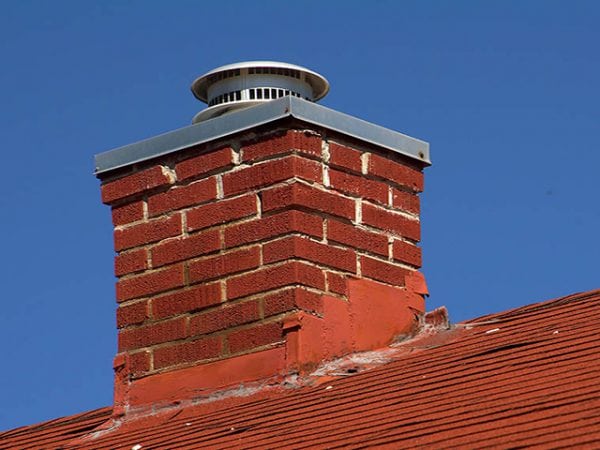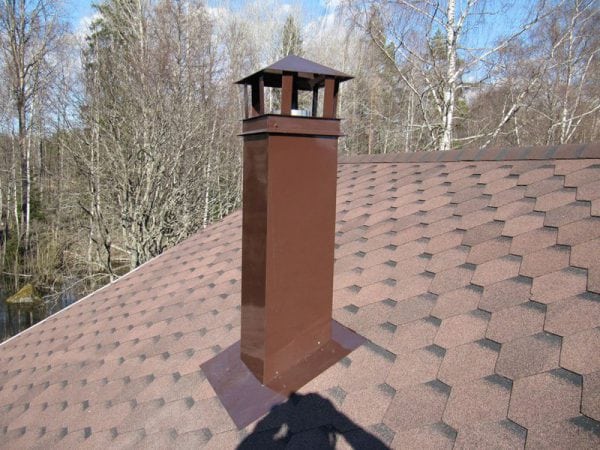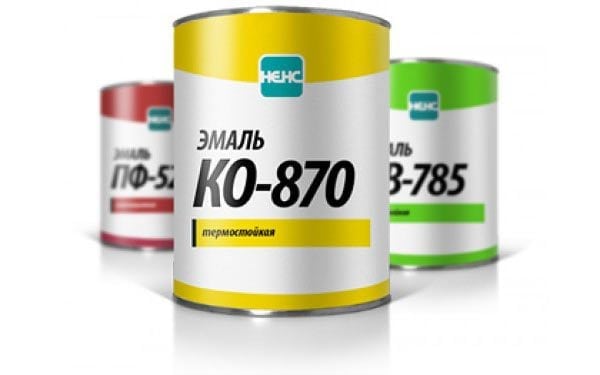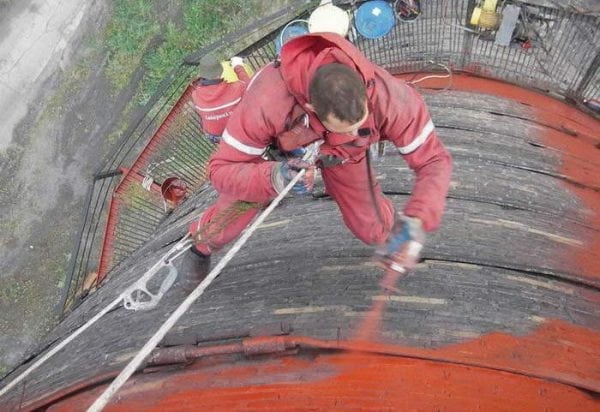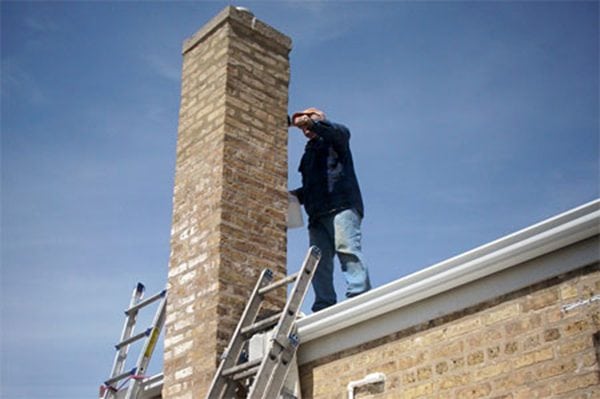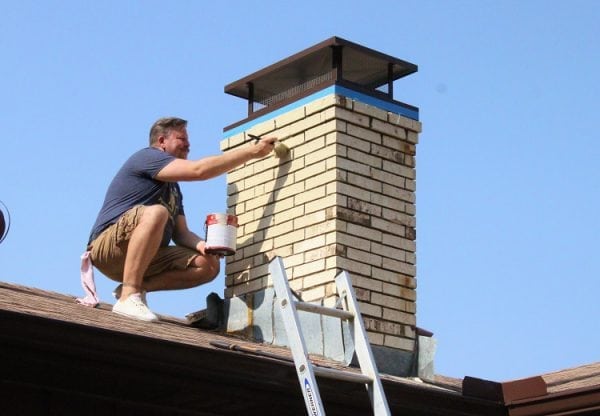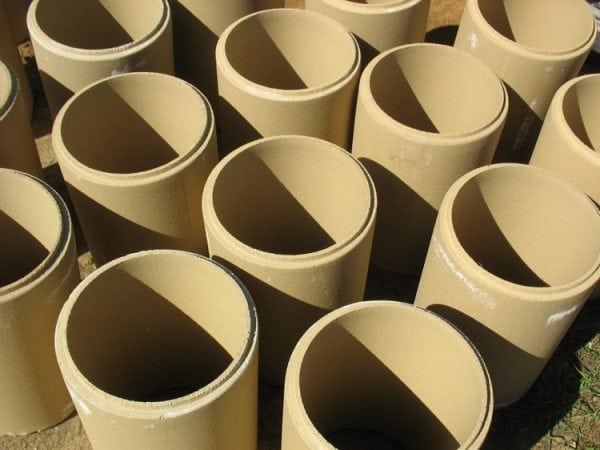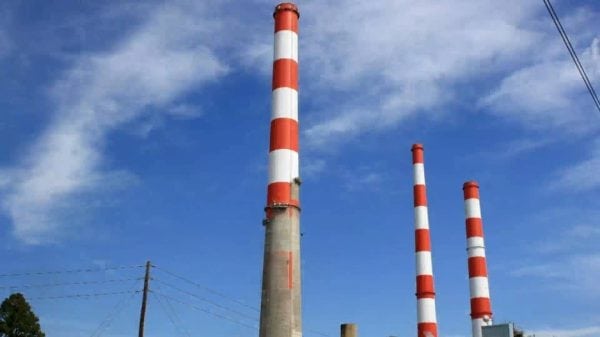Regardless of what material the chimneys are made of, all of them are subjected to increased load: the outside is atmospheric, and the inside has high temperature gases. Painting of chimneys will not only give them an aesthetic appearance, but also extend the service life. But before painting, it is necessary to choose a suitable dye and carefully prepare the surfaces for painting.
- Chimney Wear Causes
- Paint selection
- Work stages
- Metal surfaces
- Brick chimneys
- Ceramic pipes
- Reinforced concrete
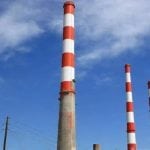
Chimney Wear Causes
During prolonged exposure to high temperatures from 280 ° C to 620 ° C, the strength of materials decreases, they become less resistant to corrosion. The main reasons that lead to premature destruction of the chimney:
- new technologies aimed at protecting the environment, especially the “wet cleaning” system;
- too much air injection through the boiler-pipe system is also a negative factor;
- frequent or abrupt changes in operating conditions;
- work with violation of design regimes;
- frequent change of fuels.
An effective protection against destruction is pipe painting. It is important to competently approach the choice of paints and varnishes in order to protect metal and reinforced concrete structures. It is necessary to take into account operating conditions and surface features.
to contents ↑Paint selection
The choice of the coloring composition primarily depends on what material the chimney is made of, because brick paint will not be able to fully protect the metal from adverse conditions. Therefore, before purchasing a paint and varnish product, you should carefully familiarize yourself with its characteristics, find out what materials it is intended for. But there are uniform requirements for all paints and varnishes:
- Drying time. A very important parameter for outdoor work, because with a long drying time, the applied coating can be damaged by weather conditions.
- Temperature range. It is necessary to take into account the approximate temperature of the gases passing through the pipes and the minimum temperature drop in the region.
- Conditional viscosity. The optimal indicator is 36 conditional degrees.
- Validity. It is determined how long the protective properties of the dye are preserved.
If all indicators are selected correctly, then on the pipe surface a dense heat and moisture resistant film is formed, which will last a long time.
Popular paints and varnishes have the following properties:
- resistance to decomposition caused by oxidation;
- resistance to aggressive atmosphere;
- small surface tension;
- water repellent ability;
- corrosion resistant;
- heat resistance.
The period of maintenance-free operation is increased to 15 years due to these indicators. For this reason, coatings are used to protect many objects:
- domestic and industrial heat exchangers;
- superheated steam pipelines;
- chimneys;
- collectors.
All heat-resistant liquid and paint products have increased toxicity, and when applied, use protective equipment (respirator, gloves and clothing that covers the skin).
A good composition for strengthening the surface are organosilicon materials with high moisture repellent properties, which also have good adhesion to various building materials.
To paint the chimneys outside, such coatings are suitable:
- The best option for the primer is a gray enamel KO-8111, which has increased heat resistance.
- OS-12-03, red and white paints are usually used for bright signal staining.
KO-8111 paint perfectly withstands temperatures up to 620 ° C; therefore, it is often used when painting pipes of boiler rooms and other industrial facilities. It is ideally suited for external anticorrosion work on heating and water pipelines. Also, this enamel is used for painting steam pipelines and other process pipes.
Enamel KO-8111 has good moisture resistance, and it is also resistant to temperature extremes. As the degree increases, the paint applied to the surface even becomes stronger.
For a bright signal painting of pipes on a dried, primed surface, paint red and white. This composition is applied in two or three layers, and the paint layer is obtained with a thickness of 35-55 microns, with a flow rate of 125-160 g / m2 per layer.
Also considered suitable material for painting organosilicon coatings. They have many advantages:
- Synthetic polymers have high endurance and resistance to damage and abrasion.
- The use of this material guarantees increased coating strength, since organosilicon paints are unique in their heat resistance. They are able to endure long-term operation at temperatures up to 720 ° C.
- This paint material has a small surface tension. It forms a coating that has high atmospheric stability, as well as reduced retention of dust and dirt.
These materials paint:
- automobile mufflers, various parts of engines and even jet engine nozzles;
- heat exchangers, collectors and pipelines;
- metal and brick pipes of stoves in houses, saunas.
After the silicone paint dries, a very durable coating is formed. It is resistant to fire and has many other protective properties.
Now there is an abundance of organosilicon paints and enamels for metal and brick pipes. When choosing paintwork materials, it is important to understand their protective capabilities.
to contents ↑Work stages
Choosing how you can paint the pipe, do not immediately apply paint. It is necessary to carry out preparatory work and select the necessary materials. You may need:
- brush (if the pipe size is large, then you can use a roller);
- hard metal brush;
- acetone or another degreaser;
- primer;
- selected paintwork composition.
Further work will vary depending on what the chimney is made of. Chimneys are made from:
- metal;
- brick;
- ceramics;
- reinforced concrete.
to contents ↑Before starting work, it is recommended, if possible, to stop the gas supply to the chimney and allow the pipe to cool to ambient temperature. This will not only reduce injuries (risk of burns on a hot surface) and the toxicity of the paint composition, but also allow the dye to form a stronger film when hardening.
Metal surfaces
Pipes are made mainly of stainless steel and have recently become the most popular in private homes.They are installed not only on gas boilers and columns, but also mounted on bricked stoves. Stainless steel chimneys are durable and comfortable. Their main advantage is ease of installation. But before how to paint stainlesssurface must be prepared. To do this, do the following:
- clean the metal from traces of the old coating, dust and other contaminants using a metal brush;
- thoroughly washed and dried;
- treated with a degreaser;
- apply an anticorrosive mixture (if the soil contains anticorrosive additives, then this stage can be omitted);
- after drying, the chimney is covered with 2-3 layers of primer.
When the soil is dry, you can start painting. Staining is carried out around the perimeter and starts from the top.
Corrosion protection is of great importance for the operational life of the chimney. At a high operating temperature and in an aggressive environment, the protective paint layer must be resistant to these harmful factors. Therefore, painting chimneys is a necessity.
to contents ↑Brick chimneys
Now the brick is less popular, but until recently, chimneys were built mainly from it. But how to paint a brick? First of all, the design must be prepared:
- tighten the loose bolts on the connecting clamps;
- remove old paint or lime;
- wash from soot, soot and dirt;
- to restore the damaged layer of plaster (it is not necessary to completely change it, just apply the mixture to the damaged areas and wait for it to dry);
- apply a primer in at least 2 layers (more is allowed).
After the soil dries, you can paint. Paint on the brick is recommended to be applied in 2 layers to ensure greater strength and color saturation.
to contents ↑Ceramic pipes
This is a construction novelty consisting of a ceramic pipe, insulation layer and foam concrete or metal finish. It is considered the most heat-saving.
The method of painting depends on what the insulation layer is covered with:
- foam concrete is processed using the same technology as brick;
- metal is painted in accordance with the above-described rules for painting a metal base.
When choosing dyes for ceramic pipes, heat resistance does not play a big role, because the insulation layer reduces the heating of the outer surface.
to contents ↑Reinforced concrete
In private houses, reinforced concrete structures are extremely rare, most likely, it will be an industrial pipeline passing through the site, delivering gas or water to the house. It will be necessary to choose a color for him not to his taste, but in accordance with the requirements of marking coloring.
The process of protection and decoration is carried out in exactly the same way as when processing and applying paints and varnishes on a metal chimney. The main thing is not to forget about anti-corrosion treatment and degreasing, because the uninterrupted supply of utilities depends on the safety of the pipeline.
If the paint is selected in accordance with all requirements and all processing steps are followed, then after drying the composition, a strong non-toxic film will be obtained, which will protect the structure for 5-15 years. The period of protection depends on atmospheric influences, the internal temperature of the chimney and on the quality of the purchased paintwork.

